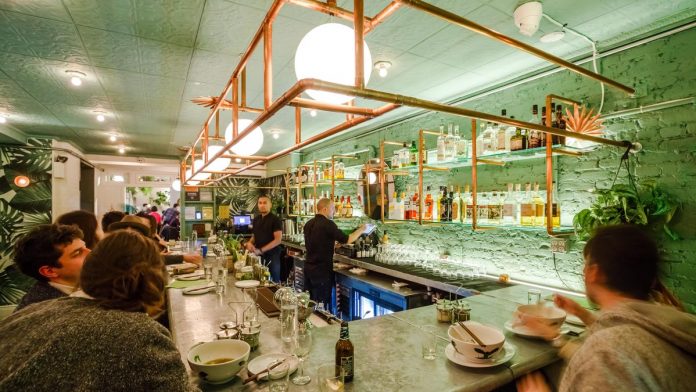Restaurant Operations entail a wide range of activities. It includes billing, order punch-ins and relaying, generating invoice, tax management and customer data tracking.
At the centre of a complete restaurant operations lies a robust restaurant POS system that integrates with a host of functions. This includes inventory management, CRM & loyalty programs and data analytics. When restaurant orders are fed into the POS, data gets stored on the system and is simultaneously sent to these other functions, making the whole management process fluid.
Let’s take an example.
Say, a customer enters a restaurant and his information is punched in by the staff as he places his order. The bill is generated and his data is relayed to the kitchen. As the customer’s data is processed, he is intimated of his loyalty points. Based on the user segments created, the CRM is activated as well. The inventory management system then updates the stock levels basis the order items. The management can also look at the Analytics program to get real-time updates of the numbers that matter at any point of time.
Thanks to the modern-day restaurant operations and management system, this chain of activities happen in a completely automated fashion which makes restaurant management all the more easy.
Modern-day operations simplify the workflow. Here are the key areas that are significantly benefited.
Back of House – The kitchen
An efficient restaurant operations set-up will ensure that the food is served to the customers quickly. A metric that matters to the customer is the turnaround time between the order being placed to the food being served. A short time for this relay would keep the customers happy and the management would also benefit via faster table flips.
Front of House – The counter
Perhaps the most important part of restaurant operations is the Front Office operations – FOH. At the front of the office, the key activities are order punching, billing, invoice generation, KOT generation and order relaying to the kitchens. A POS helps take charge of this and connects the Back of office (the kitchen) to the customer’s needs.
Data management
Restaurants want their data stored in safe and secure servers. POS systems make use of remote servers where the data is backed up, even when the restaurant goes offline. Customer data is of paramount importance to restaurants as this data is used for CRM that helps bring back customers to the restaurant.
Tracking inventory
Costs are incurred every day. Inventory costs are a significant part of the variable costs of a restaurant. A well-managed inventory management system can help optimize spends, and an inventory system linked to your POS can definitely help you take control of overspends. Correct utilisation of resources is a key factor for a lean operating system.
Reporting and Insights
With systematic collection and tracking of data, restaurant management and owners can use this information to derive insights and plough that back into their planning process. Structured or processed data helps the restaurant to track the metrics that matter on a periodic basis. This data can be rolled out in the form of custom dashboards, real-time updates, automated triggers on hitting threshold levels and so on.
Going in for the right technology
A lean operation set-up gets largely simplified with a central restaurant management system.
Restaurant owners now make informed decisions when it comes to buying the software that helps them be on top of their operations.
Buying the right software is of great importance.
Here is some of the technology that restaurants make use of to help improve the operations of a restaurant
- Cloud POS – Operates offline and is mobile. It can be used on the go. The staff can take orders at the tables, making it easier for both the staff and the customers. Managers can now make menu changes from the comfort of their homes. Cloud POS replaces the traditional POS which was a bulky and static machine keep at a restaurant.
- Self-service Kiosks – Ensures that the customers at a restaurant can place orders by themselves on the tables.
- Kitchen Display System (KDS) – Kitchen display systems quicken the order relay process between the kitchen and the front-end of the restaurant. Instead of printing KOTs, restaurants now make use of a KDS that relays the order and presents it on a system/screen. No need to worry about paper forwards.
We hope this article was informative to you and helps you get started on restaurant operations management. More power to you!
Author Bio
Aditya Sarkar is a Marketing Manager at LimeTray. LimeTray is a B2B food-tech enterprise that helps restaurants through its restaurant management and marketing solutions.

